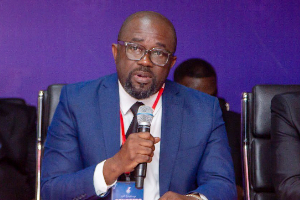 The way has now been cleared for a bid to be made for Ashanti Goldfields (ASL). Last month, the finance minister of Ghana said the country was considering selling its 20% stake in the company, though it would probably retain some shares for sentimental reasons.
The way has now been cleared for a bid to be made for Ashanti Goldfields (ASL). Last month, the finance minister of Ghana said the country was considering selling its 20% stake in the company, though it would probably retain some shares for sentimental reasons.
Ed Haslam, the chief executive of Lonmin, said when he released interim results that his company was a platinum miner, pure and simple. Lonmin therefore had no plans to increase its 32% stake in Ashanti and would be willing to sell if the right price could be obtained.
This means that more than 50% of Ashanti is up for grabs. The two most likely candidates are the big South Africans: AngloGold (owned by Anglo American) and Gold Fields (GOLD).
AngloGold knows Ashanti well as it bought a 50% stake in its Geita mine in Tanzania last year. But Gold Fields has more reason to want to acquire the company. It would provide it with black African status and is listed on no fewer than six stock exchanges throughout the world. Gold Fields also desperately wants to expand its operations outside South Africa, which was the object of the proposed merger with Franco Nevada, subsequently blocked by the South African government.
Ashanti nearly went bust in 1999 when its gold hedging programme exploded in its face in spectacular fashion. Lonmin subsequently made a bid at $7 per share for the company but was blocked by the government of Ghana, then led by Jerry Rawlings. Although Ashanti survived, it still has large obligations to the consortium of banks which rescued it. An acquisitor would have to have deep pockets and the ability to sort out the hedge book, which will be vulnerable to the recent spikes in the gold price. Chris Thompson, the chief executive of Gold Fields, is opposed to hedging, so would relish the job. The 43m oz of measured and indicated gold resource owned by Ashanti is quite a prize.
Ashanti has just produced results for the first quarter of its year. On the financial side the hedge book was mark-to-market positive at $143m. That was based on a spot price of $259 an ounce, compared with the present $273, so things may not be so hot now. The gross debt had fallen by $13m since December 31, and the company had produced 398,992oz of gold at cash operating costs of $195 an ounce. Chief executive Sam Jonah introduced a bit of blue sky with the announcement of high-grade intersections with visible gold in quartz below 50 level at the Obuasi mine in Ghana. Obuasi is a world-class mine and Gold Fields could make it into an efficient producer.
Finally, two other telling points. Ashanti has just changed its brokers in London to Williams de Bro?. Companies often do this when faced with the possibility of a bid, in the hope that the new people will find some hitherto undiscovered aces in the pack. Rumours are gathering pace and have been boosted by the decision of analyst John Bridges at JP Morgan to upgrade the company in anticipation of a change in control. The Ashanti share price at $2.95 is less than half that bid by Lonmin, so there is reason to believe that a bidder would have to offer a hefty premium.
Business News of Friday, 15 June 2001
Source: By Charles Wyatt












